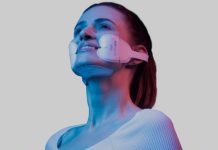Study assesses picosecond laser coupled with microlens array for the treatment of atrophic acne scars.
The picosecond laser has shown promising results in treating atrophic acne scars. However, because of the inherent risk of developing postinflammatory hyperpigmentation (PIH) in dark‐skinned individuals, the balance between safety and effective outcomes is of unique importance when choosing a laser modality for this population. This prospective, self-controlled study was conducted on 26 subjects with atrophic acne scars to objectively evaluate the safety and efficacy of a 1064-nm picosecond laser coupled with microlens array (MLA) on Asian skin.
This clinical report, published in Lasers in Surgery and Medicine (LSM), the official journal of the American Society for Laser Medicine and Surgery, Inc. (ASLMS), was selected as the January 2021 Editor’s Choice.
The study, led by Woraphong Manuskiatti, MD, is titled “Objective and Long‐Term Evaluation of the Efficacy and Safety of a 1064‐nm Picosecond Laser with Fractionated Microlens Array for the Treatment of Atrophic Acne Scar in Asians.”
“While fractional 1064-nm picosecond-domain lasers have previously shown promising results in the treatment of atrophic acne scars, published data on its safety and efficacy on dark-skinned patients are still limited,” said Manuskiatti.
At the 6-month follow-up, 50% of the subjects were rated to have at least 50% improvement of scars in terms of scar volume reduction. The rate of improvement was observed to have increased from the 1-month follow-up to the 6-month follow-up. Objectively, scar volume and skin roughness also showed significant improvement at 6 months compared to baseline. The study concluded that the 1064-nm picosecond laser with fractionated MLA is an effective treatment for atrophic acne scars on Asian skin with a low incidence of mild and transient PIH.
Dr. Woraphong Manuskiatti is a professor of Dermatology at the Department of Dermatology, Faculty of Medicine Siriraj Hospital, Mahidol University, Thailand where he has served as a full-time staff since 1998. Other than his responsibilities in teaching medical students and dermatology residents, seeing patients, and doing basic and clinical research in the field of lasers and energy-based devices (EBDs), he has also lectured and run international conferences in skin laser surgery since 2006. He has published over 60 original medical articles and 10 international book chapters in the fields of cutaneous laser surgery. He initiated and has been the program director of Siriraj international short course (one month) training in skin laser surgery since 2005.





